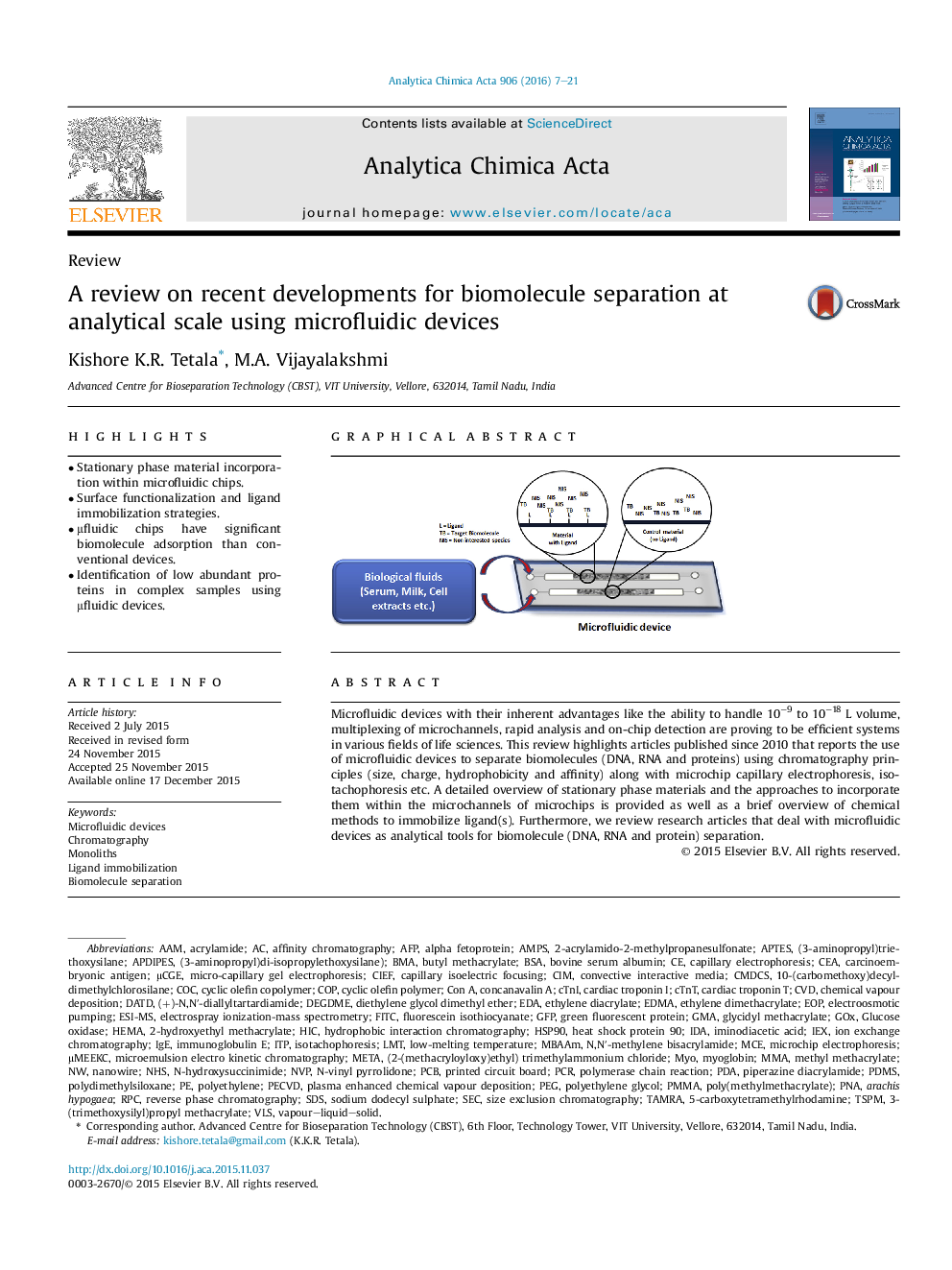| Article ID | Journal | Published Year | Pages | File Type |
|---|---|---|---|---|
| 1163033 | Analytica Chimica Acta | 2016 | 15 Pages |
•Stationary phase material incorporation within microfluidic chips.•Surface functionalization and ligand immobilization strategies.•μfluidic chips have significant biomolecule adsorption than conventional devices.•Identification of low abundant proteins in complex samples using μfluidic devices.
Microfluidic devices with their inherent advantages like the ability to handle 10−9 to 10−18 L volume, multiplexing of microchannels, rapid analysis and on-chip detection are proving to be efficient systems in various fields of life sciences. This review highlights articles published since 2010 that reports the use of microfluidic devices to separate biomolecules (DNA, RNA and proteins) using chromatography principles (size, charge, hydrophobicity and affinity) along with microchip capillary electrophoresis, isotachophoresis etc. A detailed overview of stationary phase materials and the approaches to incorporate them within the microchannels of microchips is provided as well as a brief overview of chemical methods to immobilize ligand(s). Furthermore, we review research articles that deal with microfluidic devices as analytical tools for biomolecule (DNA, RNA and protein) separation.
Graphical abstractFigure optionsDownload full-size imageDownload as PowerPoint slide
